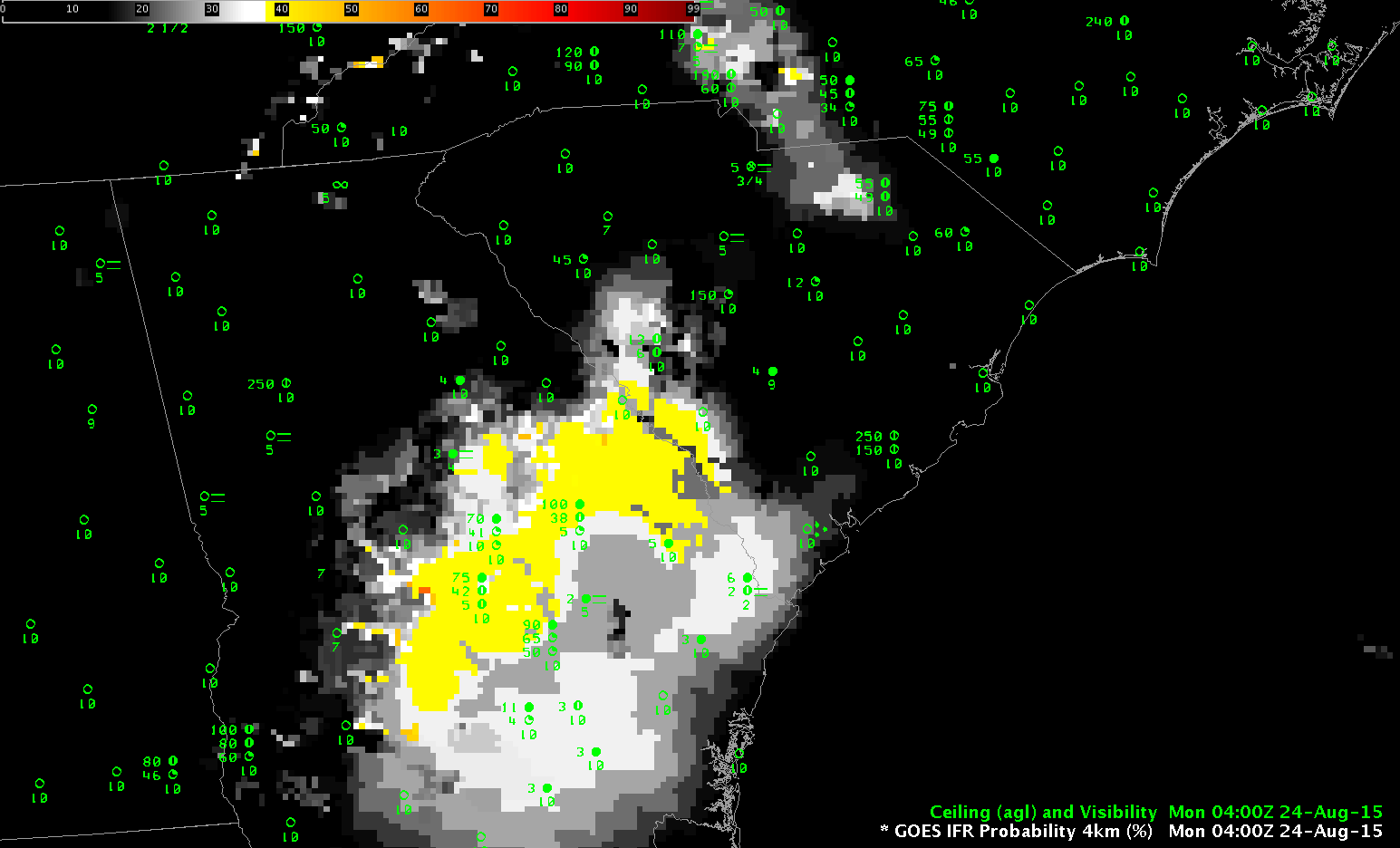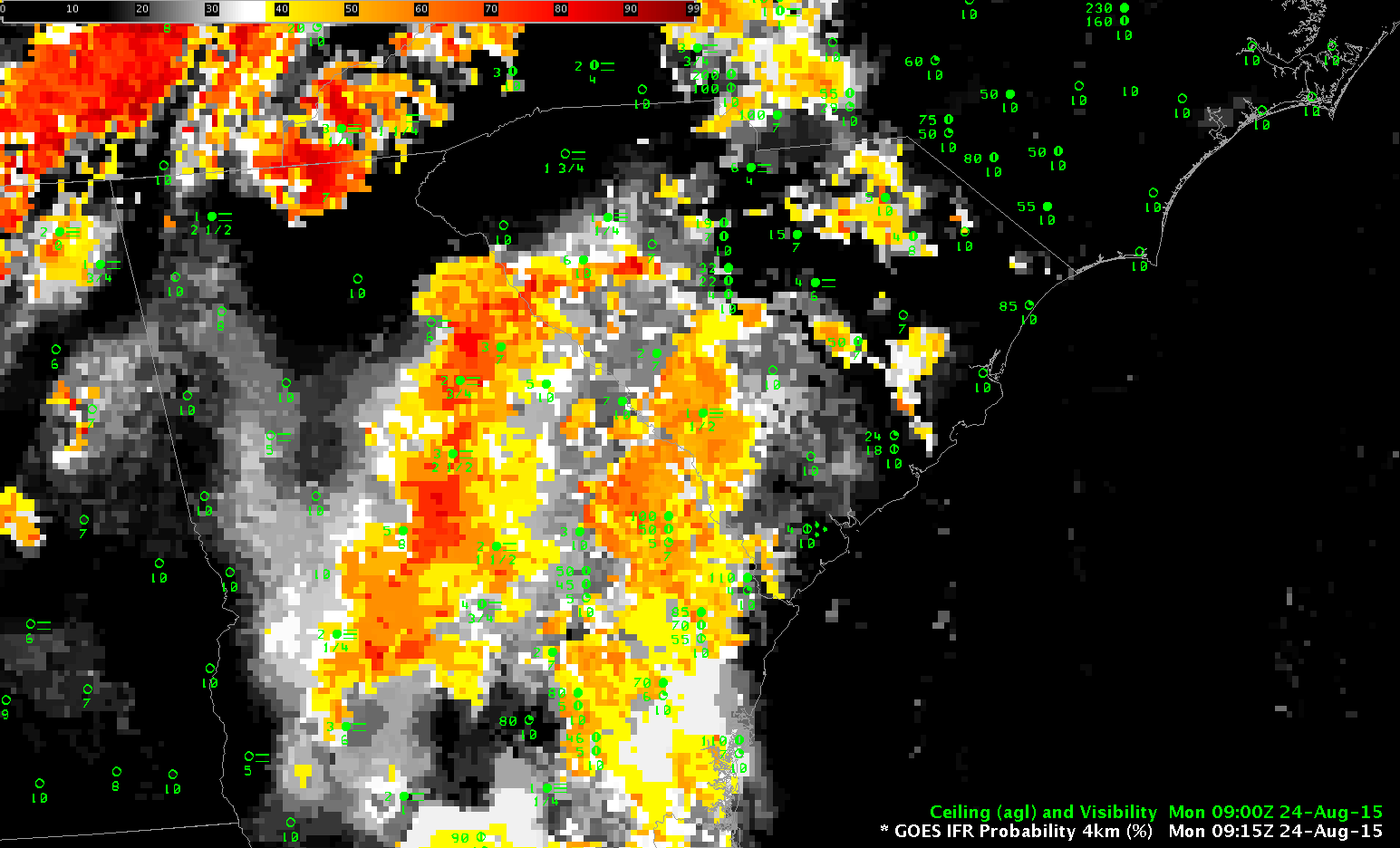This blog post shows how IFR Probability fields can give an early alert to the development of IFR Conditions.
GOES-R IFR Probability fields from 0400 UTC on 24 August 2015, above, show enhanced probabilities over interior southeast Georgia. Observations of surface visibilities and ceilings do not show widespread IFR conditions. But the presence of enhanced values in IFR Probability suggest careful attention should be paid to this region.
Three hours later (0700 UTC), IFR Probabilities have increased somewhat, and some observations are closer to IFR conditions. This is consistent with the slow development of radiation fog overnight over the southeast part of the country.
By 0915 UTC, above, IFR Conditions are observed in regions where IFR Probabilities continue to increase. The increase in IFR Probability values continues at 1100 UTC, below, with numerous regions with values exceeding 90%. IFR Conditions are widespread over southeast Georgia and parts of adjacent South Carolina.
IFR Probability fields are consistent through sunrise, with values exceeding 90% after the sun has risen, at 1300 UTC, above. The cloud-clearing that can be done with visible imagery at 1300 UTC means the edges of the fog field are more sharply defined at 1300 UTC than they were at 1100 UTC.





